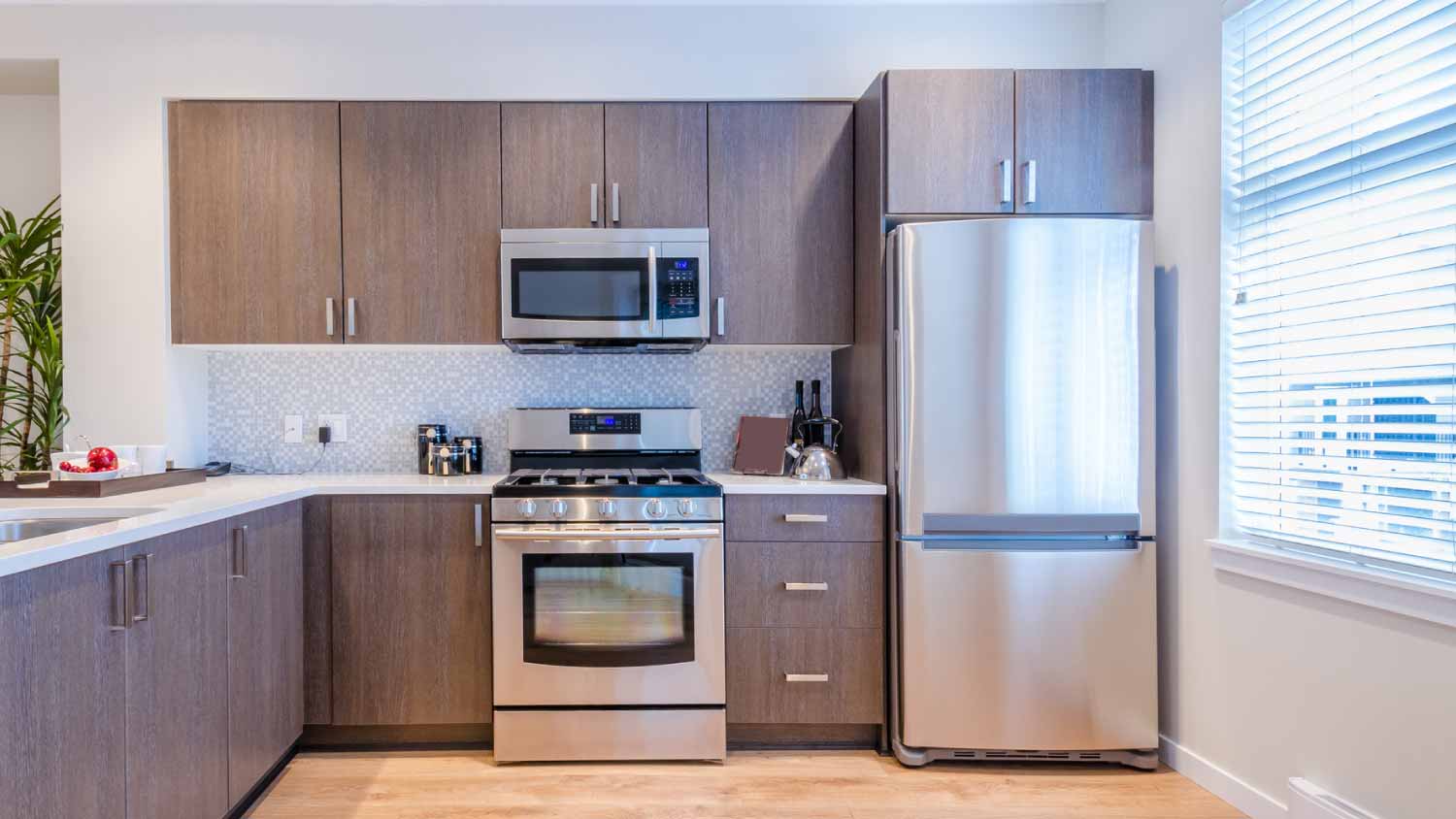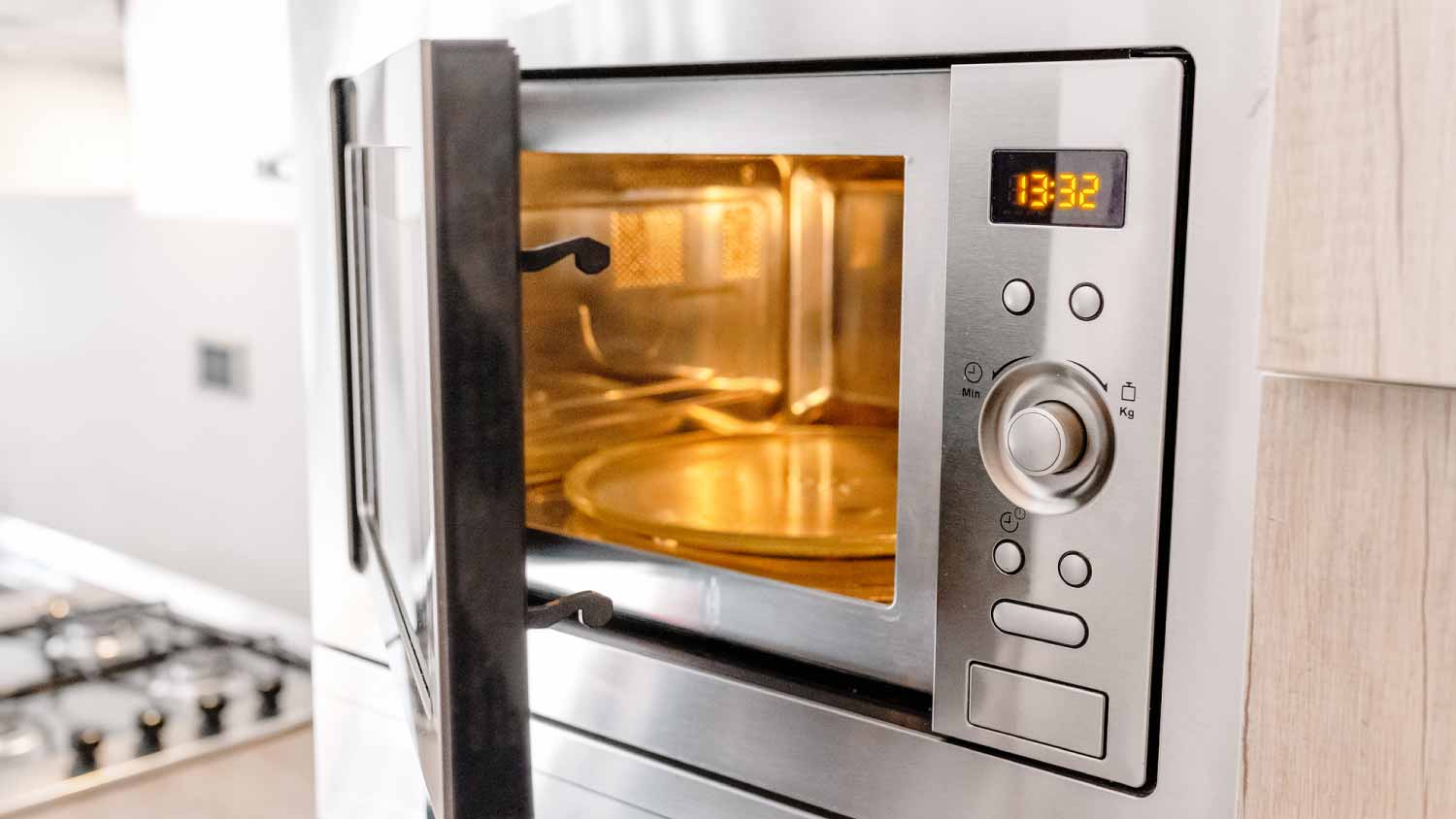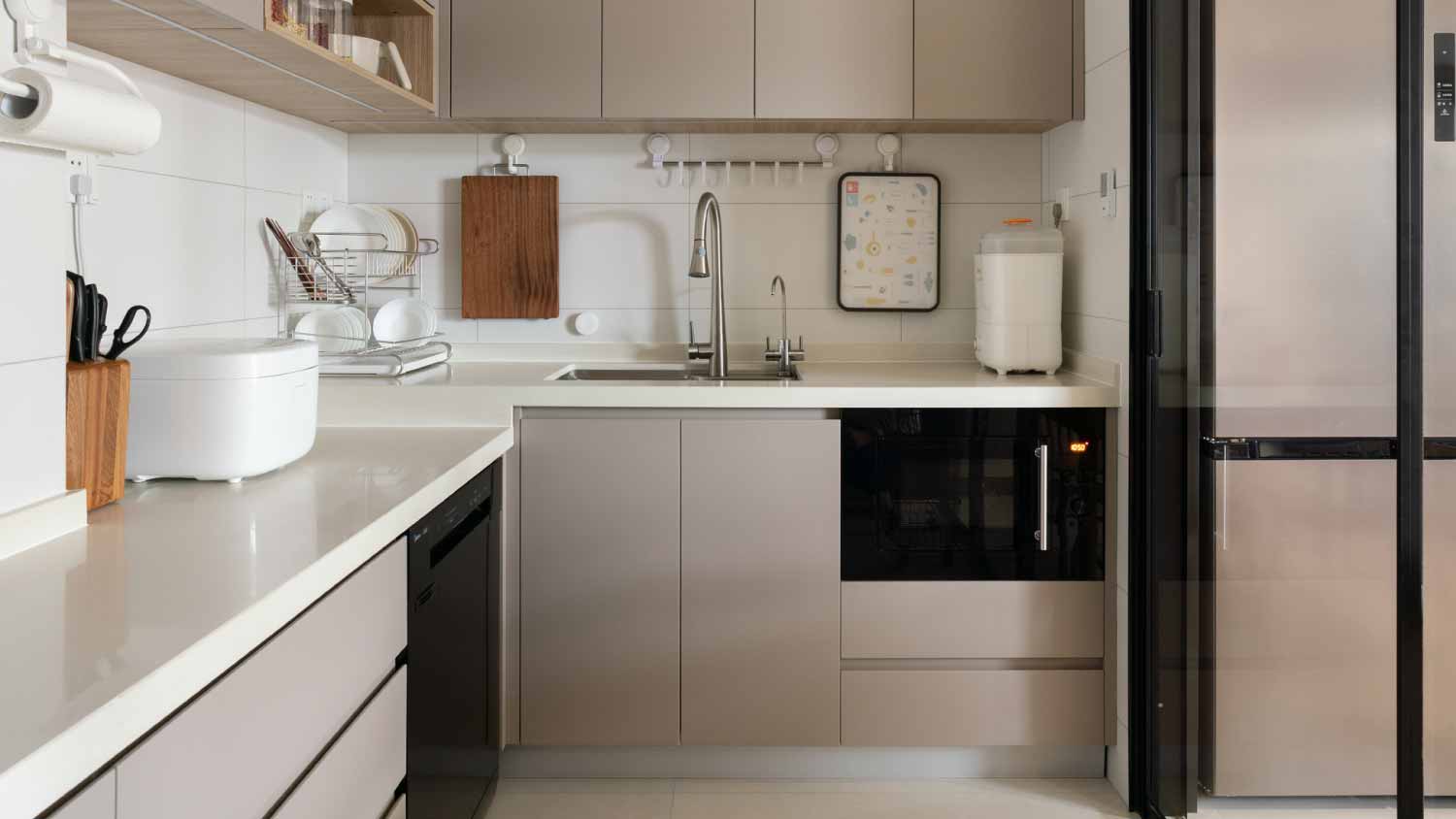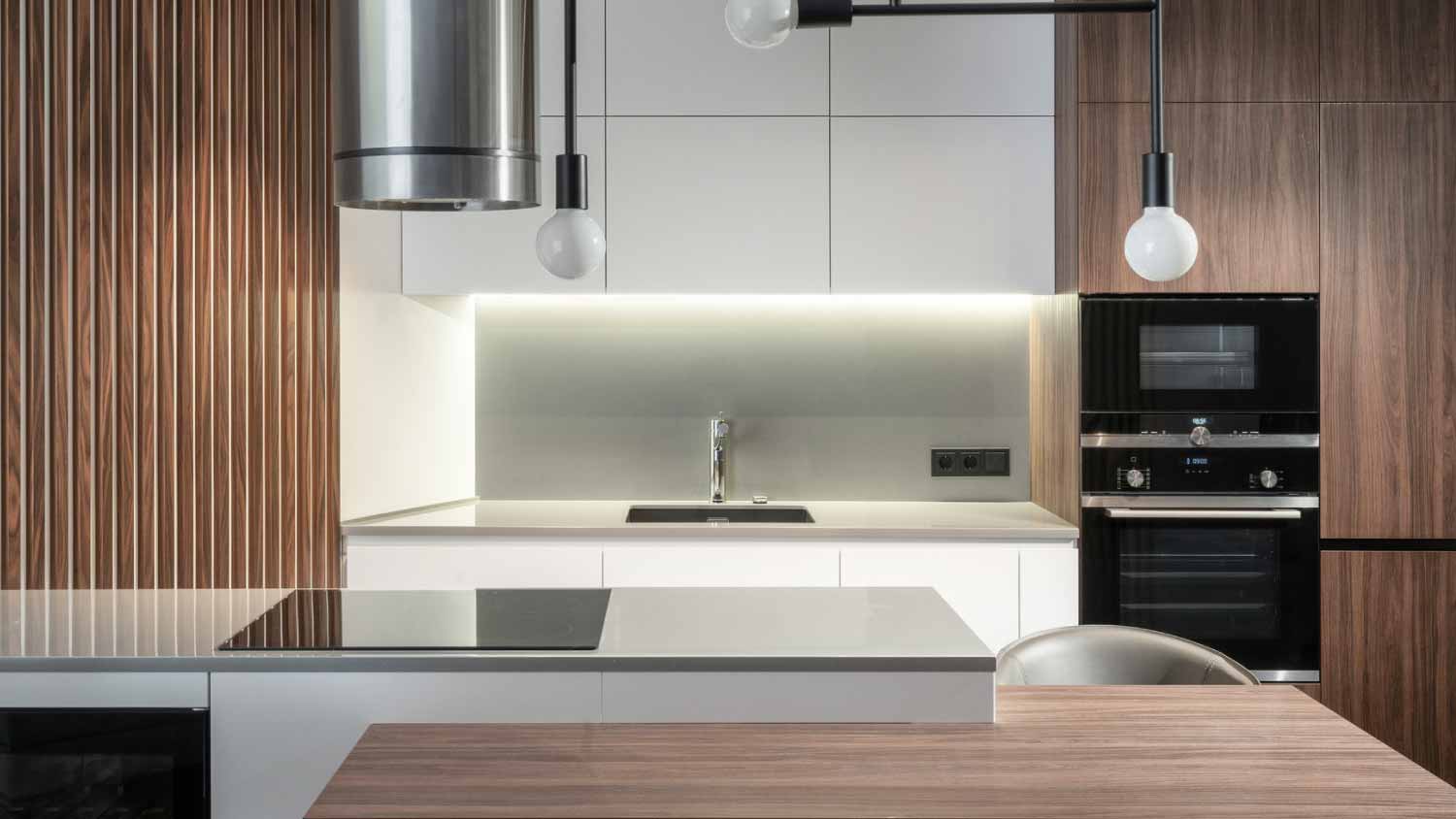
If your refrigerator has been damaged, refrigerator door dent repair cost will vary based on the imperfection's size, depth, and location. Use our guide to estimate how much you'll spend on refrigerator dent repair.
Nuke popcorn, pizza, and more at different price points


Microwaves have gone from a mid-20th century novelty to a current-day necessity in many households. Whether you’re reheating your morning coffee in a hurry or want a fast dinner, your trusty microwave is there for you. Thanks to modern technology and home design, there are a plethora of different types of microwaves to choose from. To help you decide which one is the best fit for your household, we narrowed it down to five popular types of microwaves: Countertop microwaves, over-the-range microwaves, built-in microwaves, under-counter microwaves, and convection microwaves.


Countertop microwaves are the best-known type of microwave. As the name implies, they sit on the countertop or anywhere else they will fit. No expensive installation services are required: All you need to do is find an available outlet and some space. Most countertop microwaves are ADA-compliant and don’t strain short and disabled users the way microwaves installed into the walls can.
While modern countertop microwaves have features like WiFi control and “keep warm” settings, they aren’t as powerful or high-capacity as their larger counterparts requiring installation.
| Pros | Cons |
|---|---|
| Inexpensive | Can hog counter space |
| No special installation required | Not as powerful as hardwired microwaves |
| Accessible to a wide range of users | Lower capacity |
Best for: Renters and homeowners on a budget

Over-the-range microwaves sit above a range or cooktop. There is a wide variety of over-the-range microwaves on the market, ranging from compact low-profile models to robust microwaves with air fryer functions that can practically work as a second oven. They also have built-in task lights to help you see the surface of your range or cooktop.
Because this microwave comes into direct contact with steam, grease, and other cooking byproducts, it requires a charcoal filter that needs to be periodically changed. While tall users will find over-the-range microwaves convenient, short and disabled users may find them inconvenient at best and unusable at worst. It can also be a possible burn risk to use an over-the-range microwave simultaneously with the range.
| Pros | Cons |
|---|---|
| Saves counter space | Requires a filter |
| Centralizes cooking functions | Can be inaccessible to shorter users |
| Can make the cooking area brighter | Using with the range could cause burns |
Best for: Tall users and small kitchens needing more counter space

Built-in microwaves can offer the best of over-the-range microwaves and countertop microwaves in that they can be placed into existing cabinetry. They’re fully customizable based on your kitchen layout and the needs of your household members; you get to choose the ideal spot for installation. Built-in microwaves even have options with top-to-bottom doors to prevent accidents if other cabinet doors are open (this adds an aesthetic bonus, too). While they save a great deal of counter space and don't have to be placed over the range, you'll need a microwave pro near you to correctly install one.
| Pros | Cons |
|---|---|
| Saves counter space | Expensive installation required |
| Versatile and aesthetically pleasing | Lower capacity than other microwave types |
| Accessible to a wide range of users | When replacing, the new model needs to be the exact same size |
Best for: Households with multiple cooks in the kitchen and large kitchens needing more counter space

Like built-in microwaves, under-counter microwaves (also called drawer microwaves) are built into cabinetry. But instead of using upper cabinets, this type of microwave is installed under the counter. The microwave can slide out like a drawer, and food is placed inside and removed through the top rather than the front. This novel design has a higher installation cost, and it can take some time to get used to it. Accessibility to short and disabled users may come at the expense of tall users, who might find it uncomfortable to lean down in order to use it.
| Pros | Cons |
|---|---|
| Saves counter space | Most expensive option |
| Accessible to short and disabled users | Can be uncomfortable for tall users |
| High capacity | Unusual design requires a learning curve |
Best for: Short or disabled users and small kitchens

Convection microwaves have an extra heating element that makes them a robust alternative to traditional microwaves. When in convection mode, they can handle baking sheets, foil, and other metals that normally would result in a microwave sparking. They can operate as a second oven without a potentially cost-prohibitive purchase and installation, and they can replace the need for a toaster oven, thus saving you counter space. For homes without ovens, a convection microwave can even serve as the oven. Most convection microwaves are over-the-range models, but some can also be built-in.
| Pros | Cons |
|---|---|
| Cost-effective | May require more maintenance and cleaning |
| Can function as both a microwave and oven | Fewer options on the market |
| Saves counter space | Lower capacity compared to other types of microwaves |
Best for: Small kitchens and kitchens without ovens
When deciding between different types of microwave ovens, it’s crucial to consider the following factors:
Microwaves come in a variety of price points. Ultimately, a countertop microwave is the most budget-friendly and flexible option, and it doesn’t require installation.
Installation costs can get expensive depending on your kitchen layout and where you’d like to install a larger and more powerful microwave. If you’d like to get your counter space back, an over-the-range microwave installation is apt to cost less than installing a built-in microwave.
If you have plentiful counter space, a countertop microwave probably won’t bother you. If you need every inch of it to prepare food, you’ll want a space-saving type of microwave like a built-in, over-the-range, or under-counter. If multiple members of your household cook with you, you’ll also need to consider where to place the microwave for the best flow.
How often do you use a microwave? A simpler model with fewer bells and whistles might be just fine if you won’t use it very often. But if you rely on the microwave frequently to get through mealtimes, your top concerns are ease of use and investing in a more powerful model.
Consider the height and mobility of your household members when choosing a microwave; you want something that’s easy to reach, with buttons that are comfortable for everyone to use. Built-in microwaves offer the most customization for different heights and abilities, and under-counter microwaves are more accessible to short and disabled users. Tall users may prefer over-the-range microwaves.
From average costs to expert advice, get all the answers you need to get your job done.

If your refrigerator has been damaged, refrigerator door dent repair cost will vary based on the imperfection's size, depth, and location. Use our guide to estimate how much you'll spend on refrigerator dent repair.

Looking to keep warm this winter without the high utility bills? Use this pellet stove installation cost guide to see what a natural heating solution will cost.

Several factors impact dryer vent installation cost. Use this guide to learn what affects the cost, and how much you should budget for this project.

Wondering who to call to hook up a gas dryer? Call a licensed plumber or contractor to hook up your gas dryer and make sure it's venting properly.

Washing machine not spinning? Don’t panic—just because it appears to be broken doesn’t mean you can’t get your washer running again. Read on to learn how.

Let precision in the kitchen protect you from water contamination. Follow these simple steps for installing a dishwasher air gap.